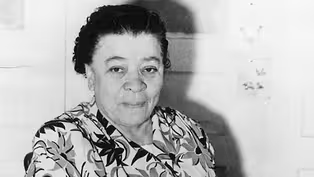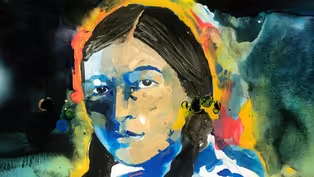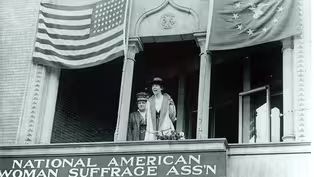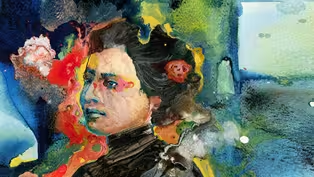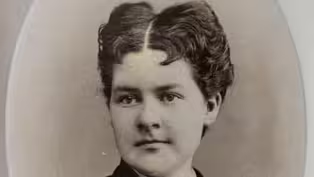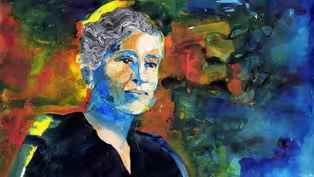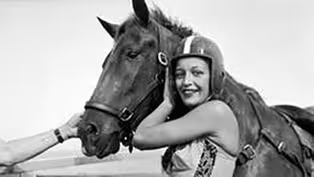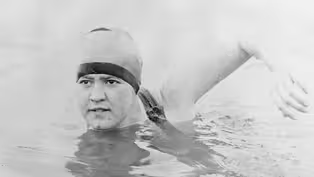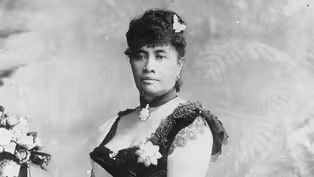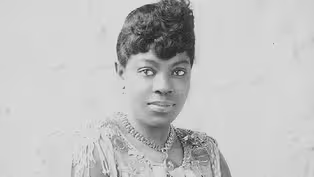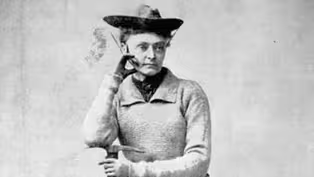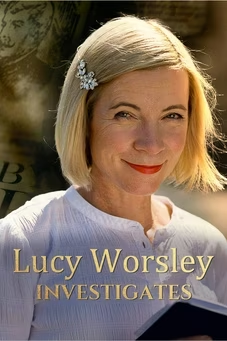
This Astronomer Discovered Over 300 Stars During Her Career
Special | 9m 34sVideo has Closed Captions
Williamina Fleming went from doing domestic work to becoming a trailblazing astronomer.
Williamina Fleming went from doing domestic work to being appointed the Curator of Astronomical Photographs at the Harvard College Observatory, making her the first woman to hold a title at Harvard University. She is credited with discovering 10 novae, over 300 variable stars, and 59 gaseous nebulae.
Problems playing video? | Closed Captioning Feedback
Problems playing video? | Closed Captioning Feedback
Support for American Masters is provided by the Corporation for Public Broadcasting, AARP, Rosalind P. Walter Foundation, Judith and Burton Resnick, Blanche and Hayward Cirker Charitable Lead Annuity Trust, Koo...

This Astronomer Discovered Over 300 Stars During Her Career
Special | 9m 34sVideo has Closed Captions
Williamina Fleming went from doing domestic work to being appointed the Curator of Astronomical Photographs at the Harvard College Observatory, making her the first woman to hold a title at Harvard University. She is credited with discovering 10 novae, over 300 variable stars, and 59 gaseous nebulae.
Problems playing video? | Closed Captioning Feedback
How to Watch American Masters
American Masters is available to stream on pbs.org and the free PBS App, available on iPhone, Apple TV, Android TV, Android smartphones, Amazon Fire TV, Amazon Fire Tablet, Roku, Samsung Smart TV, and Vizio.
Buy Now
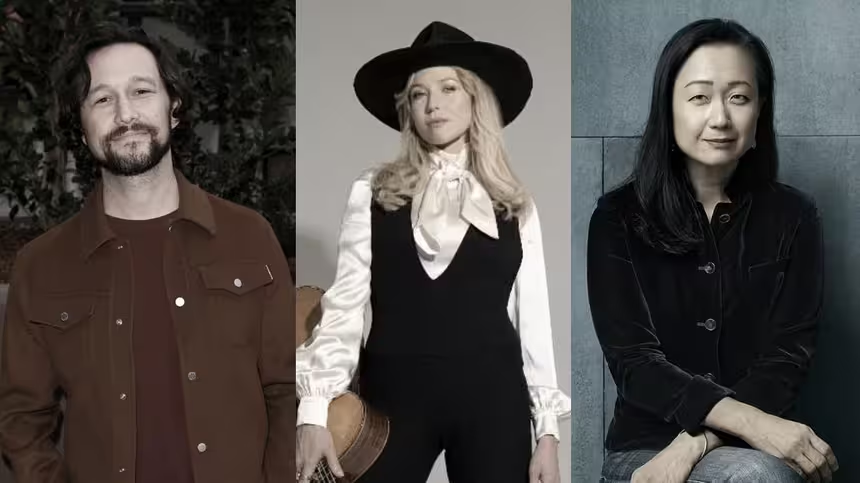
A front row seat to the creative process
How do today’s masters create their art? Each episode an artist reveals how they brought their creative work to life. Hear from artists across disciplines, like actor Joseph Gordon-Levitt, singer-songwriter Jewel, author Min Jin Lee, and more on our podcast "American Masters: Creative Spark."Providing Support for PBS.org
Learn Moreabout PBS online sponsorshipMore from This Collection
Illuminating the stories of extraordinary American heroines from the early years of feminism, American Masters — Unladylike2020 presents 26 digital short films featuring courageous, little-known and diverse female trailblazers from the turn of the 20th century.
The First Black Woman to Run for Vice President of The U.S.
Video has Closed Captions
Charlotta Bass was the first Black woman to run for Vice President of the United States. (12m 32s)
Zitkála-Šá: Trailblazing American Indian Composer and Writer
Video has Closed Captions
Zitkála-Šá co-composed and wrote the libretto for the first American Indian opera. (11m 39s)
Jeannette Rankin: The First Woman Member of U.S. Congress
Video has Closed Captions
Jeannette Rankin made history as the first woman elected to the U.S. Congress. (12m 38s)
Jovita Idar: Mexican American Activist and Journalist
Video has Closed Captions
Jovita Idar was a Latina journalist who worked for an end to segregation and racism. (11m 8s)
Martha Hughes Cannon: The First Woman State Senator
Video has Closed Captions
Martha Hughes Cannon was a historic state senator and public health pioneer. (12m 23s)
She was a Civil Rights Activist and Co-Founder of the NAACP
Video has Closed Captions
Mary Church Terrell was a suffragist, civil rights activist and co-founder of the NAACP. (11m 53s)
She was a Daredevil Performer & Advocate for the Blind
Video has Closed Captions
Sonora Webster Carver (1904-2003) was one of the most famous horse divers in the world. (10m 2s)
She was the First Woman to Swim Across the English Channel
Video has Closed Captions
Gertrude Ederle made history in 1926 as the first woman to swim across the English Channel (11m 54s)
Queen Lili‘uokalani - The First and Last Queen of Hawai‘i
Video has Closed Captions
Queen Lili‘uokalani was the first sovereign queen, and the last monarch of Hawai'i. (12m 14s)
Sissieretta Jones was a Trailblazing Black Opera Singer
Video has Closed Captions
Sissieretta Jones was the first Black woman to headline a concert at Carnegie Hall. (11m 5s)
The First American Indian Doctor
Video has Closed Captions
Susan La Flesche Picotte became the first American Indian woman doctor. (11m 37s)
Annie Smith Peck: Record-Breaking Mountaineer
Video has Closed Captions
She was a record-breaking mountaineer, educator and suffragist. (10m 40s)
Providing Support for PBS.org
Learn Moreabout PBS online sponsorshipShe was a true star.
It was the dawn of astrophysics and she had a hand in it and in discoveries that still matter today.
1900, Washington, Georgia.
43-year-old astronomer Williamina Fleming traveled from Boston to experience her first solar eclipse.
They took a steam ship and traveled by rail.
It was a major undertaking and the amount of equipment that they would have carted along - telescopes, clocks, photographic supplies.
"I shall always be glad that I have seen a total solar eclipse.
Simply as a spectacle it is magnificent."
Williamina Paton Fleming was born in 1857 in Dundee, Scotland.
After her father died, Fleming started working as a teacher's assistant at age 14 to support her family.
In 1878, at age 21, Fleming immigrated with her husband to Boston, Massachusetts.
Unfortunately, there isn't much known about her husband.
Some sources say he died, some say he abandoned her, but she was pregnant.
So that put her in a desperate situation, which explains why she would take a domestic servant's job.
Fleming became a maid at the home of Edward Charles Pickering, director of the Harvard observatory.
But the Pickerings, recognizing her intelligence, moved her into the observatory and taught her how to analyze photographs of the heavens.
They took long-exposure photographs of the sky through the telescope, and stars appeared on the film that no one had ever seen.
Observatories had traditionally been about ascertaining the positions of the heavenly bodies.
But he was after the physics of the stars.
What are they made of?
Why do they look different?
Questions that, for a long time, had seemed unanswerable.
To support his new approach to astronomy, Pickering did something highly unusual: he hired women.
When he arrived at the observatory, he found several women already working there as computers to calculate the actual positions of stars.
And Pickering saw an advantage to it, because women were cheaper than men, and didn't need any advanced education to do the jobs given to them.
None of the women at first ever used the telescopes.
They just had to be good at math, and willing.
"In many things women's patience, perseverance, and method make her man's superior.
Let us hope that in astronomy, she may prove herself his equal."
Some women dared to harbor dreams of working in science, but they had a very hard time.
Several of the women's colleges were just being founded, but there was active objection to higher education for women.
Some people thought they weren't capable of it, others thought it was harmful to women.
It was felt that women didn't have the strength, the stamina to go out to telescopes and do observing.
So they couldn't possibly be actual professional astronomers.
But they turned out to be really gifted scientists in their own right.
My name is Wendy Freedman and I'm an astronomer on the faculty at the University of Chicago.
When I started out, there was a big debate about how old the universe was.
Is the universe 10 billion years old, or is it 20 billion years old?
I'm known for resolving this debate, making a measurement of the universe, which is about 13.7 billion years.
Over the course of my career, I've seen a lot of changes from the development of high-speed computing to new telescopes, to new instruments.
I actually started out in the era where we used photographic plates in the same way as Williamina Fleming.
In 1890, Pickering published a new catalog of stars.
Fleming personally classified some 10,000 of them.
Astronomers at the time were interested in taking spectra, that is dispersing the light of a star into a rainbow and making maps of the entire visible universe.
So what Williamina Fleming did was to look at the spectra on these photographic plates and recognize that there were patterns.
"A great many women must have a similar aptitude for astronomy - and if granted similar opportunities would undoubtedly devote themselves to the work with the same untiring zeal, and thus greatly increase our knowledge of the stars."
In 1899, after almost 20 years at the observatory, Fleming was promoted to Curator of Astronomical Photographs - the first woman to ever hold a Harvard University title.
She became the supervisor of about 15 other women, at a premier astronomy observatory.
It's unprecedented.
It's surprising, even now, that it happened.
And they were doing real foundational science.
In 1893, Fleming published an article in the journal "Astronomy and Astrophysics," advocating for more women to work in the field.
She also protested the unequal pay women were receiving.
They worked six days a week and they made about 25 cents an hour.
Men in similar positions were making far more than she was.
So she complained about it.
But she didn't get very far.
"I had some conversation with the director regarding women's salaries.
He seems to think no work is too much or too hard for me, no matter what the responsibility or how long the hours.
Does he ever think that I have a home to keep and a family to take care of, as well as the men?
And this is considered an enlightened age!"
When I first started observing at the Palomar telescope, in Southern California, women had been told you can't observe because there are no restrooms for women.
For much of my career I've been the only woman in the room.
But I've had many opportunities to lead a major observatory, to lead this major project with the Hubble Space Telescope, the project to build the Giant Magellan Telescope, which will be an 80-foot diameter optical telescope in the Andes Mountains in Chile.
One of the first women admitted to the Royal Astronomical Society, Fleming also won medals for her achievements.
In her 30-year career, she discovered 10 novea, 310 variable stars, and 59 gaseous nebulae - including the iconic Horsehead Nebula.
Fleming also recognized the existence of earth-sized stars, later named White Dwarves.
As a single mom, having put her son through MIT, she later died of pneumonia in 1911, at the age of 54.
The glass plates at Harvard are a unique and irreplaceable record of 100 years of the night sky.
They're still used and they're important enough that they're all being digitized so that astronomers can access them from anywhere.
To this day, we rely on the discoveries that were made by these women early on.
Williamina Fleming's life is very inspiring.
She persisted despite real difficulties.
Opened the doors for women of today.
"Women who have taken up any branch of science need not be discouraged, even if others refuse to give credit to their work.
Labor honestly, conscientiously and steadily, and recognition and success must crown your efforts in the end."
Support for PBS provided by:
Support for American Masters is provided by the Corporation for Public Broadcasting, AARP, Rosalind P. Walter Foundation, Judith and Burton Resnick, Blanche and Hayward Cirker Charitable Lead Annuity Trust, Koo...

